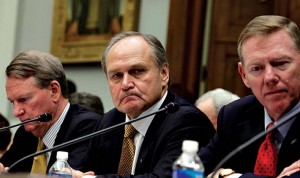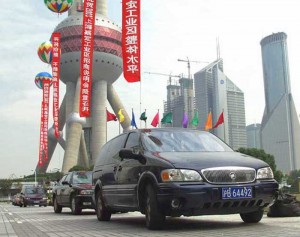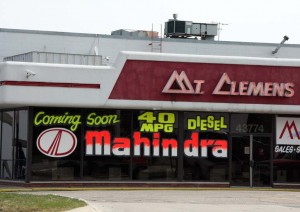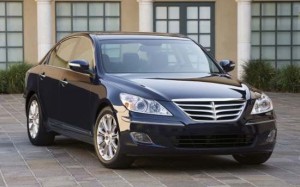
Brother, can you spare a dime? The jet-setting Detroit Three at hearings: left, fired GM CEO Rick Wagoner, ex Chrysler CEO Bob Nardelli, middle, Ford's surviving CEO Alan Mulally, right.
Every December, a group of auto scribes gathers together to share some good cheer and see how we did at predicting the events of the unfolding year. To be honest, even the best of the group failed to come close to calling the big stories of 2009.
No surprise, really, when you consider the strange twists and turns the auto industry has taken during the last 12 months. Even the best fiction writers would have had trouble scripting this plot.
Sure, there were signs that the auto industry was slumping, and that the Detroit’s Three were in trouble, but having both General Motors and Chrysler go bankrupt? And the U.S. government become majority owner of GM, with Italian automaker Fiat controlling Chrysler? And what about Toyota? Twelve months ago, most of us were writing about the fact that the giant Japanese automaker seemed certain to become the world’s largest automaker, finally overtaking troubled GM. So, who could have begun to suspect all the problems that would follow for Toyota in 2009? And what about the unexpected rise of the Chinese?
But I’m getting ahead of myself. The fact is, there were so many big stories in 2009 it may be impossible to come up with a fair, accurate and complete list of the 10 Top Auto Stories that everyone will agree on. But I’ll try.
And TheDetroitBureau.com would like to encourage readers to come up with the stories they would add to the list. Just go to the Comments section at the end of this story.
So, let’s raise our glasses and toast, a fond farewell to 2009. Well, farewell and good riddance. That was the year that was. It’s over, let it go. And let’s hope we’ll have some good news to include in our wrap-up of 2010.
- General Motors declares bankruptcy. The automaker was in the midst of celebrating its centennial when it became clear it might not make it to 101. The outgoing Bush Administration tossed in enough emergency cash to keep it going – and pass the problem onto the new Obama White House. In turn, the government forced the automaker to declare Chapter 11, from which the “new” GM emerged, barely two months later, clear of billions in debt – and now controlled by its new majority owner, the U.S. taxpayer. It is still losing money in the depressed market.
- Chrysler declares bankruptcy. This one was a bit easier to predict. The Auburn Hills, Michigan-based company had been falling apart for years, and its parent, the equity giant Cerberus Capital Management couldn’t keep it afloat. If anything, the big surprise was that Chrysler could survive Chapter 11, again with government help. In this case, though, it emerged under the control of the Italian automaker, Fiat.
- The White House fires GM CEO Rick Wagoner. The federal auto bailout triggered any number of other big stories, but perhaps the most striking was the March ouster of General Motors Chairman and Chief Executive Rick Wagoner who was either to blame for the automaker’s collapse or simply the fall guy. Wagoner’s duties were split between new non-executive Chairman Ed Whitacre, the former AT&T boss, and CEO Fritz Henderson. Barely eight months later, Whitacre, the lanky Texan, fired GM lifer Henderson to take over the CEO duties – temporarily, at least – as well.
- GM dumps four brands, but keeps Opel. To win its federal bailout, GM agreed to dump four brands, including 83-year-old Pontiac, which built its last car in November. The automaker hoped to sell off the three other marques, and Hummer will get new Chinese owners, but the sale of Saturn to Roger Penske collapsed and the brand will now close, as will Saab, unless an 11th hour bid proves acceptable. Then there’s Opel, a majority stake set to go to a consortium led by Canadian supplier Magna. But at the last minute, GM’s Board canceled the deal – a major source of friction that led to CEO Henderson’s ouster.
- Detroit makers “fire” 3,000 dealers. There once was a time when having a big retail network was considered a sign of strength.
No more. Imports like Toyota have shown you can be lean and productive, for dealers making money on your products are more likely to work harder for your brand. So, using their bankruptcies as cover, GM and Chrysler effectively fired almost 3,000 dealers. But the backlash continues, and Congress, which unlike the administration, is meddling in the auto business may yet force the makers to take at least some retailers back.
- China becomes the world’s largest automotive market. Who’da thunk it. Barely a decade ago, when General Motors decided to open up a plant in Shanghai, former CEO Jack Smith was roundly criticized for throwing away the company’s money. Now, just about every automaker in the world is setting up shop behind the old Bamboo Curtain. While the American Cash for Clunkers program was, at best, a mixed success, Chinese incentives have kept that market humming, almost as if there was no global economic meltdown and so, from almost the first of the year, China has been the largest national automotive market in the world – about two decades ahead of when even the most bullish analysts had expected that to happen.
- U.S. auto sales plunge 45% from the decade’s peak. Going into 2009, everyone expected a bad year. But no one expected to see sales plunge to 10 million, the lowest levels since the recession years of the early 1980s and, in terms of the overall decline, the worst fall since the Great Depression, eight decades before. Seemingly everything that could go wrong did go wrong. The question now is just what will happen in 2010 and beyond. Despite some signs of life in the American economy, the bears have the field and are predicting that U.S. auto sales will be lucky to get much into the 11 million range. Longer term, it could be decades before sales return to prior peak levels in excess of 17 million – if ever.
- Toyota gets what it asked for, and a lot more. The Japanese automaker’s new year began on a grand note, as it displaced rival GM to become the world’s largest automaker. But then things went down hard and fast. As Toyota wound up its fiscal year, on March 31st, it revealed its biggest loss since the end of World War II and predicted it would be in the red, again, for the following year. But that didn’t even account for the body blows the company would take for a series of quality problems and recalls, including the 3.8 million vehicles Toyota said it would have to fix because loose floor mats could jam accelerator pedals wide open. That recall followed the well-covered August crash of a Lexus sedan in which a California Highway Patrol officer and three members of his family were killed.
- Volkswagen set to become the world’s largest automaker. Okay, some might argue that this is really a 2010 story, as we’ll have to wait until after the New Year to get final production and sales numbers, but by the end of the third quarter it seemed all but inevitable that the ascendant German maker was on a course to pass Toyota and capture the crown. It was a great year for VW in a number of ways. Among other things, the German maker beat back a David-versus-Goliath takeover bid by sports car maker Porsche. Instead, Porsche will become the latest addition to a brand line-up that ranges from entry-level Skoda to supercar makers Bentley, Lamborghini and Bugatti.
- Ford skips a bailout and turns that to its advantage. Though Ford CEO Alan Mulally sat side-by-side with his Big Three counterparts during Congressional hearings on an auto bailout, the automaker ultimately decided to go it alone. Mulally’s risky decision to secure a line of credit by mortgaging Ford’s assets has paid off thus far. And would continue doing so throughout 2009, as Ford made it clear that it was the only member of the Big Three that could survive on its merits. The maker backed that up with some strong new products that, according to independent arbiters, like Consumer Reports magazine, were delivering “world class” quality. Ford managed to boost retail market share, a wee bit, by year’s end.
As we said earlier, there were plenty of other stories that arguably belong on the Top 10 list. There’s Hyundai, for one, which soared up the sales charts and grabbed honors as North American Car of the Year, with its first luxury car, the Genesis sedan. There’s the collapse of Chrysler Financial. And there’s the ongoing bailout of GMAC, which is reportedly going to receive another $3.5 billion in federal bailout money early in 2010. We could have also spotlighted the plunge in the luxury market, a segment once thought to be recession proof. But with Wall Street starting to hand out big bonuses again, much to the outrage of taxpayers, the revival of the luxury market could be one of our Top Ten in ’10. Also worthy of note was the fact that a few brands, three to be exact, led by Subaru of America, actually managed to increase sales and market share in 2009. What do they know?
Think we missed a big one? We probably did. So tell us what you’d add to the list.




I’ld add Jimmy Johnson being named AP Male Athelete of the Year, from the perspective that a race car driver was awarded this honor over any other sport.
It’s difficult to whittle the list down to 10 but you must mention that 2009 had to be the biggest year on record for discontinued and homeless brands. Some we know are gone Pontiac, Saturn and others we’re not sure about Hummer, Saab, Volvo.
What about the subaru story?
The little car maker that could!
Out of “enlightened self-interest,” I would suggest that NADA folding AutoExec magazine, its flagship monthly publication published in one form or another for more than 80 years, was more than a “blip” on the automotive radar.
Marc Stertz
Former publisher, AutoExec magazine, and executive director, NADA Publications